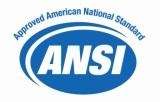
Find IACET Accredited Providers of Continuing Education and Training
Search by location, delivery method, industry and much more to find the training you need!

Earn IACET Accreditation
Are you an education provider who seeks to evaluate the quality of your training? Discover how you can earn the IACET Accreditation.

IACET Standards Development
It is valuable to align your continuing education & training (CE/T) programs with the ANSI/IACET Standard, internationally recognized as the official standard for CE/T.

Secure Portal for Current or Prospective Providers
Log-in to the secure portal to manage your membership and accreditation information and to access members-only resources.
 The International Accreditors for Continuing Education and Training (IACET) is the developer of the original Continuing Education Unit (CEU) and today ensures that providers of continuing education and training can prove they provide high-quality instruction by following the ANSI/IACET 1-2018 Standard for Continuing Education and Training through a rigorous accreditation process. The Standard is a universal model for learning process excellence. It defines a proven model for developing effective and valuable continuing education and training (CE/T) programs by measuring a provider's training program from procedure to process to result.
The International Accreditors for Continuing Education and Training (IACET) is the developer of the original Continuing Education Unit (CEU) and today ensures that providers of continuing education and training can prove they provide high-quality instruction by following the ANSI/IACET 1-2018 Standard for Continuing Education and Training through a rigorous accreditation process. The Standard is a universal model for learning process excellence. It defines a proven model for developing effective and valuable continuing education and training (CE/T) programs by measuring a provider's training program from procedure to process to result.
Because the ANSI/IACET Standard focuses on how continuing education and training programs are developed - not what they cover - it provides a certifiable framework of researched and proven best practices that can be applied across disciplines and industries. It measures all aspects of a CE/T provider’s program development across nine nationally recognized categories. This has allowed for the ANSI/IACET Standard for Continuing Education and Training to be recognized as the official standard for CE/T in the world. Become an IACET Accredited Provider within the competitive marketplace and be recognized by a reputable organization certifying your commitment to high-quality, excellence in education.
Mission
We accredit providers around the world that deliver quality learning and inspire continuous improvement.
Vision
A world that learns better.





